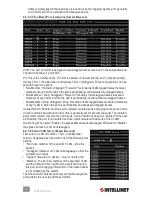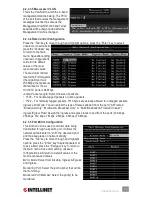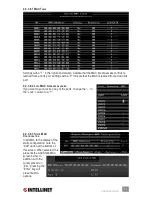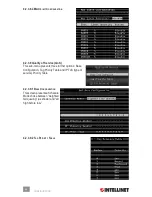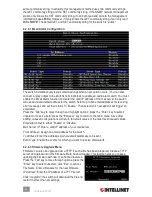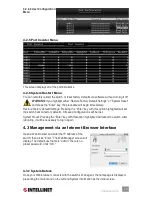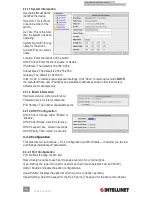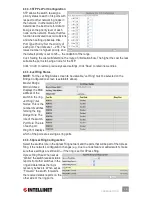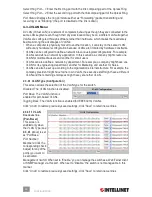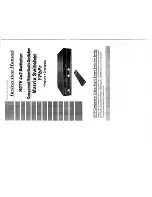
Priority:
When setting the bridge priority, the limit can be from 0 (the highest priority) to 65535
(the lowest priority). The bridge priority is used in selecting the root device, root port and
designated port. The device with the highest priority becomes the STA root device. However,
if all devices have the same priority, the device with the lowest MAC address will then become
the root device.
Hello Time:
This is the interval (in seconds) at which the root device transmits a configuration
message. The limit is 1 – 10 seconds.
Forward Delay:
When setting the forward delay, the limit is 4 – 30 seconds. This is the maximum
time the root device will wait before changing states (e.g., listening to learning to forwarding).
Max. Age:
When setting the maximum age, the limit is 6 – 40 seconds. This is the waiting time
for receiving packets before attempting to reconfigure the link.
4.2.3.2.3 sTP P
ER
-P
oRT
C
onfiguRaTions
STP allows the switch to assign a priority status to each of its ports with respect to other
networking nodes in the network. In other words, given the priority level of each node on the
network, STP determines the best route for data to flow. Ensure that this function is activated
when setting up backup links and to avoid collisions.
Press the “Tab”
key to move
through and
highlight options;
press the “enter”
key to select/
unselect or to exit
a field; press the
“esc(ape)” key to
return to the main
menu. Save after
editing; unsaved
configurations will
return to default
values or the most
recent saved
values.
Priority:
When setting the priority of each port, the limit is 1 – 255. The default priority is set at
128, the midpoint of this limit.
Cost:
The cost assigned to each port determines the route of information flow.
Port Role:
This displays the role of each port as either Forwarding or Blocking.
15
CONFIGURATION
Summary of Contents for 523769
Page 1: ...fast Ethernet Managed Switch user manual Model 523769 INT 523769 UM 0607 01 ...
Page 2: ......
Page 47: ......


















